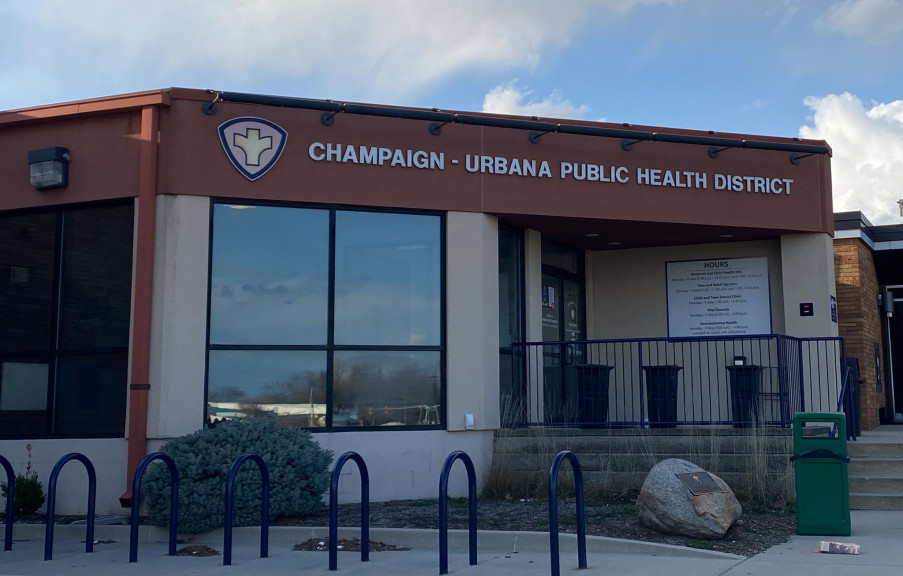Illinois bill could legalize safe drug injection sites

The Champaign Urbana Public Health District in Champaign has provided drug harm reduction services for more than 20 years, according to Joe Trotter, a Harm Reduction Program Coordinator. Photo by Elissa Eaton
A proposed bill working its way through the Illinois legislature could legalize the creation of spaces for people to use illegal drugs under the supervision of medical professionals and trained staff with the goal of preventing overdoses.
The bill would allow the Department of Human Services to license “Overdose Prevention Sites,” which would allow people to use illegal drugs without legal repercussions.
Currently, overdose prevention sites are legal only in Rhode Island and in some cities in the United States, according to the American Family Physician journal article.
Overdose prevention sites may prevent people from overdosing because the drugs will be used in a safe environment, said Joe Trotter, a Harm Reduction Program Coordinator.
“A lot of clients will use their drug in locations that are either not safe to them, or simply in places where they're alone,” he said. “When you use a drug alone, particularly a drug that has an opiate in it, there's a high chance that you can overdose.”
The sites would prevent drug users from harassment and offer another layer of security, Trotter said.
“The concept is to be able to give people a place where they can use their drug without harassment,” he said.“It can be something where health professionals can be nearby to offer support, to offer security, to simply offer someone there that can show care.”
Drug harm prevention sites can be an entry point for people who use drugs to begin getting treatment for their addiction, Trotter said.
“Syringe exchange and safer consumption sites are this kind of bridge for clients to be able to come in where someone can show them care until they're ready to reach that point of reducing their use or not using at all,” he said.
The Champaign Urbana Health District already provides some drug harm prevention services, including a syringe exchange program and access to naloxone kits to stop opioid overdoses, Trotter said.
The goal of this bill is to curb increasing overdose deaths, according to the bill’s sponsor La-Shawn Ford.
Rachel Hoopsick, an assistant epidemiology professor at University of Illinois, led a study that showed a significant increase nationwide in methamphetamine deaths tied to opioid co-use in the past 20 years.
Hoopsick said she discovered this trend to be reflected locally when she interviewed drug users in the Champaign-Urbana area. She found that many of them use methamphetamine in conjunction with other drugs, such as opiates, she said.
Many people tend to use methamphetamine and opiates because they are different classes of drugs, and their effects balance each other out, Hoopsick said.
Other times, she said, people will unintentionally use meth without realizing that it was cross-contaminated with other drugs.
“We have some people who may be intending to use methamphetamine alone, but might also unintentionally be using fentanyl with that – just as a part of the drug production process, it gets contaminated,” Hoopsick said.
These trends show that the current approach in the United States is not working, Hoopsick said.
Harm reduction approaches are the best way to reduce fatal overdoses, she said.
“The rates of fatal drug overdose are at really unprecedented levels higher than ever before, so that really tells us that the approach that we're taking right now, is not working,” Hoopsick said.
“We've seen great evidence for harm reduction approaches like they're using at the Champaign-Urbana Public Health District.”

